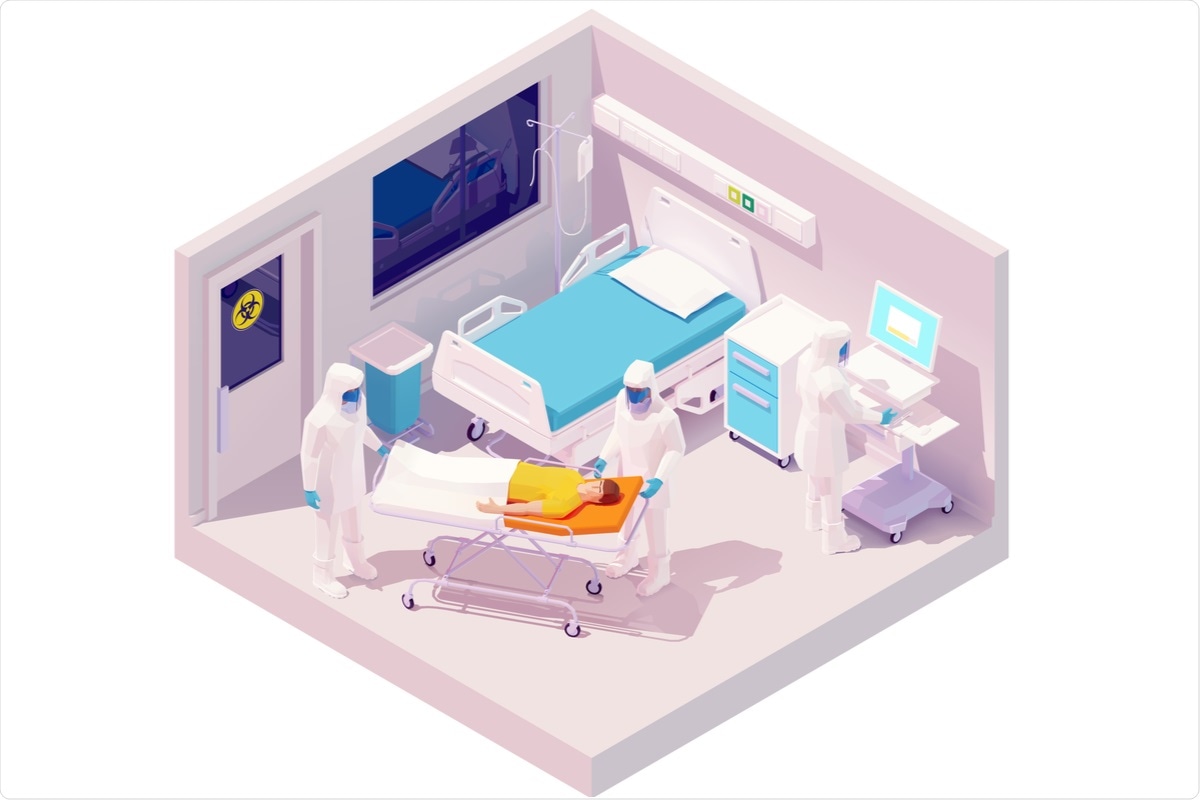Outbreaks of the coronavirus disease 2019 (COVID-19) are a frequent occurrence in healthcare settings such as hospitals and nursing homes, as physical distancing is difficult to achieve despite all infection prevention and control measures that are implemented in these settings. Early case detection allows individuals to be isolated and secondary transmissions better prevented, though pre- or asymptomatic cases that may still be transmitted between both healthcare workers and patients must also be considered.
In a paper recently published in the journal Infection Control & Hospital Epidemiology, the researchers study the dynamics of the severe acute respiratory syndrome coronavirus 2 (SARS-CoV-2) infections on a geriatric hospital ward by whole genome sequencing. Herein, the researchers find the considerable secondary transmission to occur between patients and healthcare workers.
 Study: Unexpected details regarding nosocomial transmission revealed by whole-genome sequencing of severe acute respiratory syndrome coronavirus 2. Image Credit: tele52 / Shutterstock.com
Study: Unexpected details regarding nosocomial transmission revealed by whole-genome sequencing of severe acute respiratory syndrome coronavirus 2. Image Credit: tele52 / Shutterstock.com
Evidence of nosocomial transmission
Individuals who tested positive for SARS-CoV-2 by reverse-transcriptase polymerase chain reaction (RT-PCR) assay of nasopharyngeal samples collected on a 30-bed hospital ward in Sweden over a one-month period were included in the study. Taken together, this included 32 patients and 15 healthcare workers.
The median age of patients was 84, with around half being male. Importantly, 44% of patients died during the course of the study, all of which bore significantly higher viral loads as compared to those who survived. The authors note that many of these individuals had suffered hip fractures, which were thus reported to be major comorbidity for COVID-19.
Whole-genome sequencing was subsequently performed on the samples, which revealed that cases on the ward were represented by three distinct clades of 20A, B, and C, with cases known to have been acquired during the hospital stay being more genetically similar.
The ward that housed the patients was separated into 8 rooms, and the group tracked each outbreak case by proximity. All patients infected with SARS-CoV-2 clade-20A1 shared rooms A or C, while clade-20A2 and 20C were limited to rooms E and H, respectively. Clade-20B was most widespread, present in all but room C, and was also most commonly found amongst healthcare workers, followed by clade 20A1 and A2.
The authors suggest that this represents four separate introductions of the virus onto the ward, clades 20A1, A2, B, and C, the former three of which then underwent secondary transmission to at least one other individual.
Tracking SARS-CoV-2 introductions
The first and only case of clade 20C was detected in a patient four days following their admission, well within the presymptomatic period of COVID-19, and thus was likely obtained as a result of community transmission. This patient was discharged the following day and appears not to have transmitted the virus to any other patient or healthcare worker during this time.
Clade 20A1 may have been introduced to the ward by a patient, as other patients sharing room A were quickly diagnosed with the same strain. Around one week later, the residents of room C became infected, thereby suggesting intermediate transmission by a healthcare worker.
Clade 20A2 was first detected in a healthcare worker and later in just one patient, also suggesting secondary transmission to a patient. The most common clade, B, was detected in two patients who were physically separated early in the study. Thus, these patients also likely obtained the infection from a healthcare worker before widespread secondary transmission to other patients took place.
Overall, the researchers of the current study indicate that there is strong support for healthcare-associated infections, from both healthcare workers and other patients, occurring in 78% of patients. Of these, six are thought to be patient-to-patient; however, the majority may still originate from healthcare workers.
The authors highlight that determining the direction of transmission is often difficult given the high number of asymptomatic cases likely to have occurred, particularly as detailed clinical information was not available for healthcare workers in this study.
While the healthcare workers involved in this study utilized appropriate protective equipment and engaged in infection prevention and control measures, the rate of adherence is not known. It is therefore difficult to rate their efficacy in preventing secondary transmission.
Regular testing that can identify infectious COVID-19 before symptoms manifest is likely the most effective method of preventing healthcare-associated infections, as it allows individuals to be quarantined before outbreaks occur.